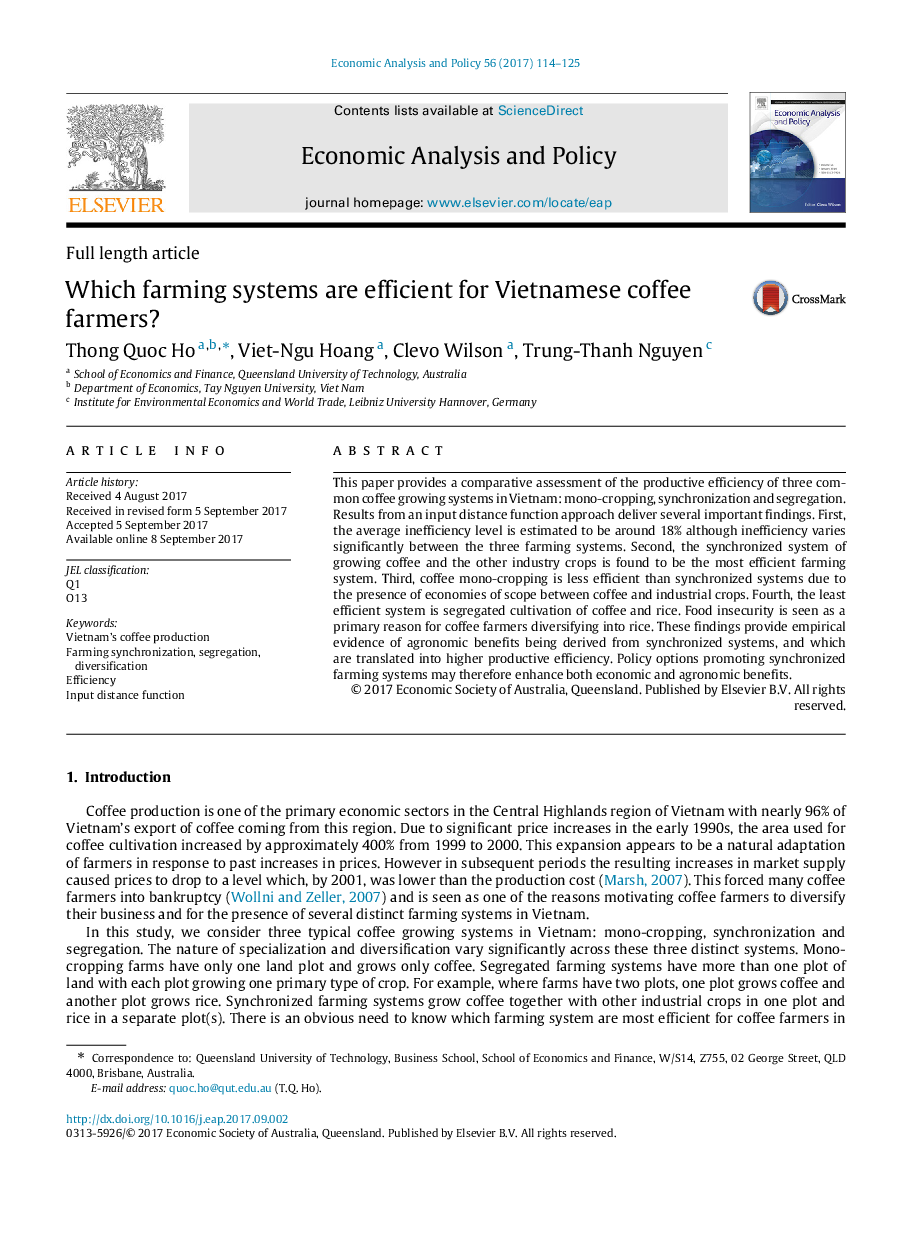| Article ID | Journal | Published Year | Pages | File Type |
|---|---|---|---|---|
| 5052614 | Economic Analysis and Policy | 2017 | 12 Pages |
Abstract
This paper provides a comparative assessment of the productive efficiency of three common coffee growing systems in Vietnam: mono-cropping, synchronization and segregation. Results from an input distance function approach deliver several important findings. First, the average inefficiency level is estimated to be around 18% although inefficiency varies significantly between the three farming systems. Second, the synchronized system of growing coffee and the other industry crops is found to be the most efficient farming system. Third, coffee mono-cropping is less efficient than synchronized systems due to the presence of economies of scope between coffee and industrial crops. Fourth, the least efficient system is segregated cultivation of coffee and rice. Food insecurity is seen as a primary reason for coffee farmers diversifying into rice. These findings provide empirical evidence of agronomic benefits being derived from synchronized systems, and which are translated into higher productive efficiency. Policy options promoting synchronized farming systems may therefore enhance both economic and agronomic benefits.
Keywords
Related Topics
Social Sciences and Humanities
Economics, Econometrics and Finance
Economics and Econometrics
Authors
Thong Quoc Ho, Viet-Ngu Hoang, Clevo Wilson, Trung-Thanh Nguyen,
